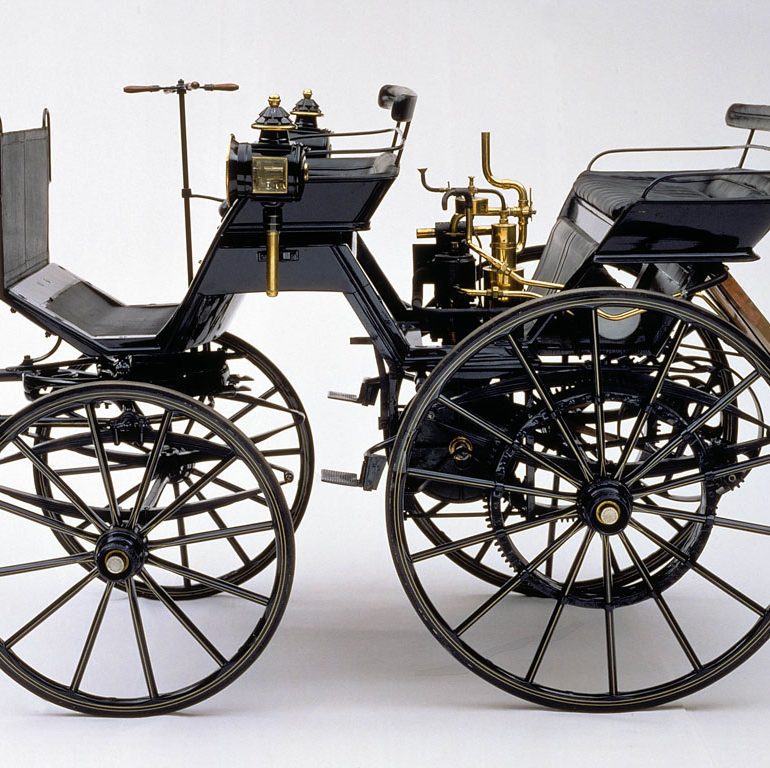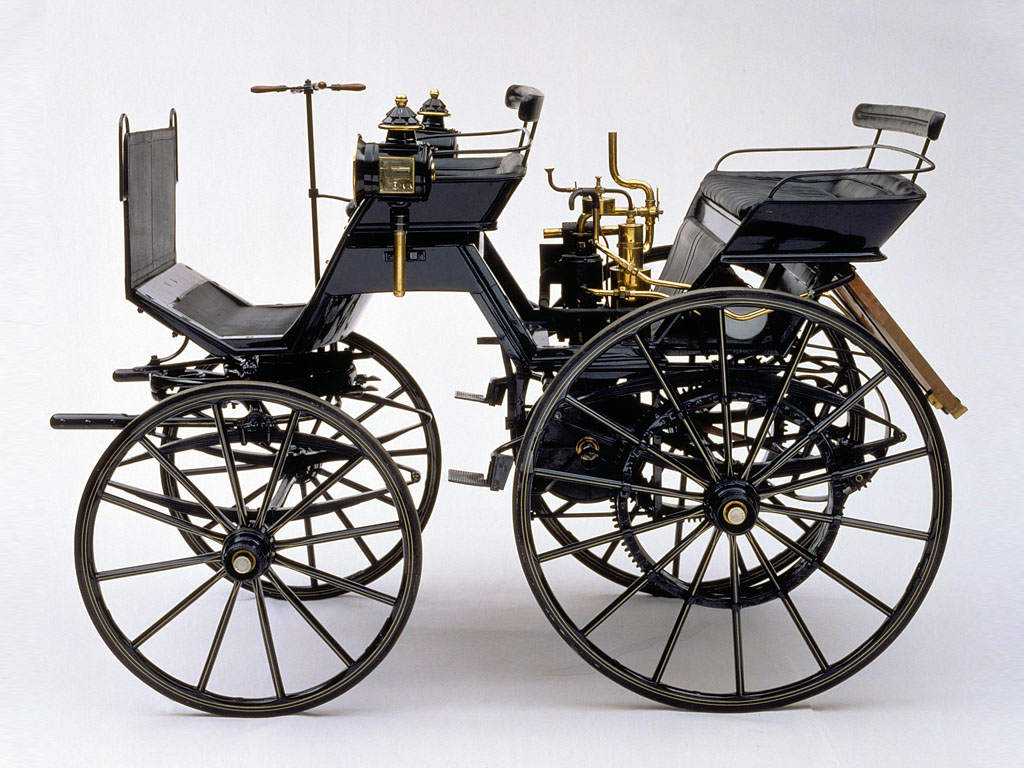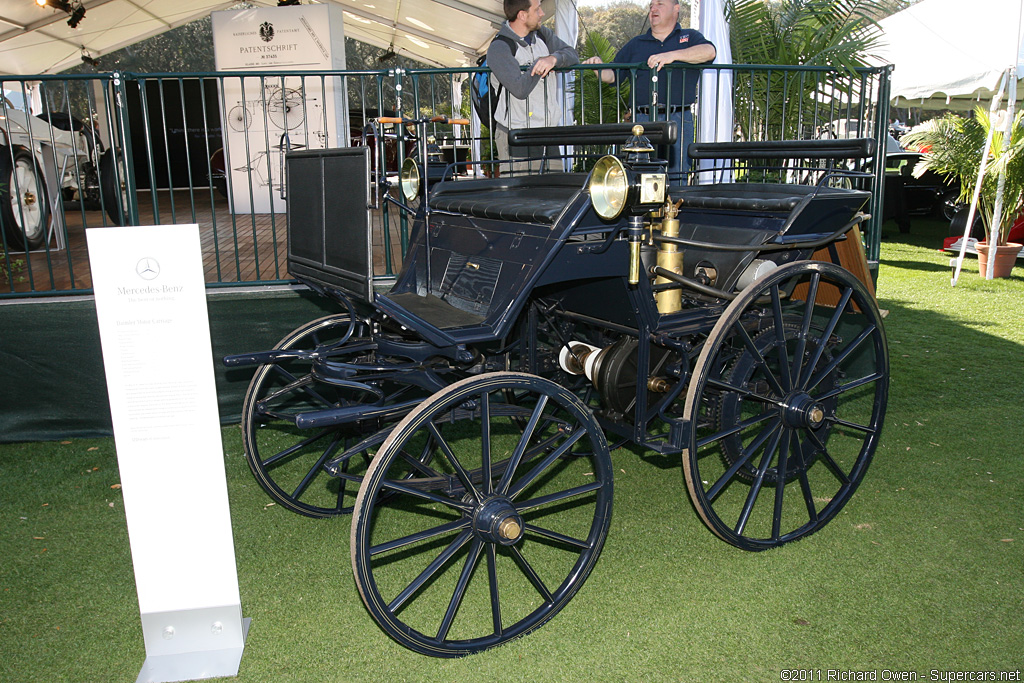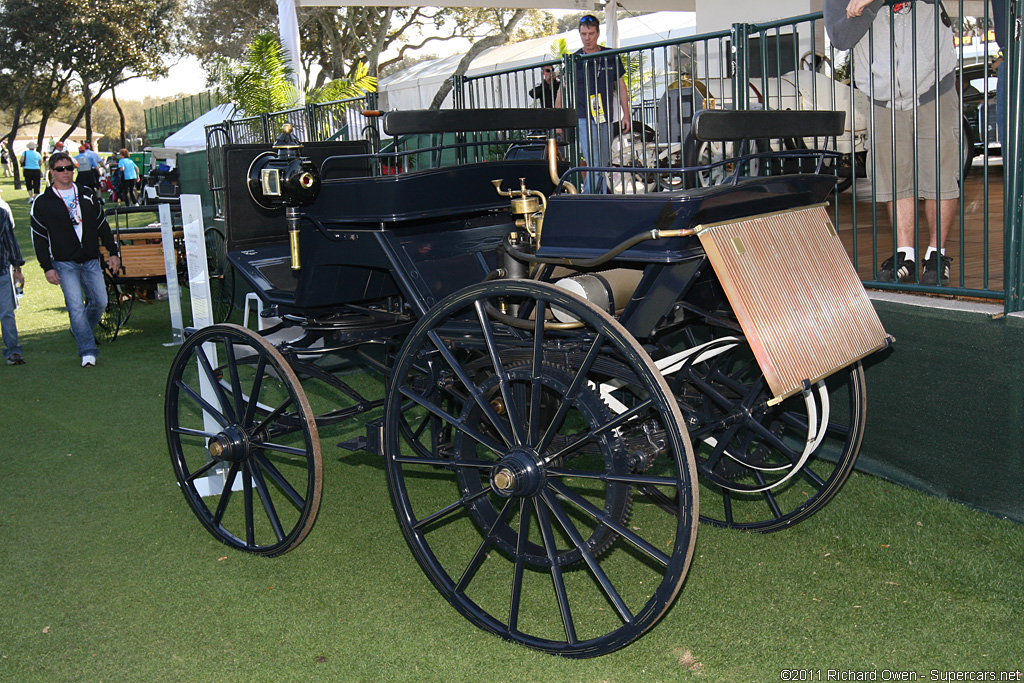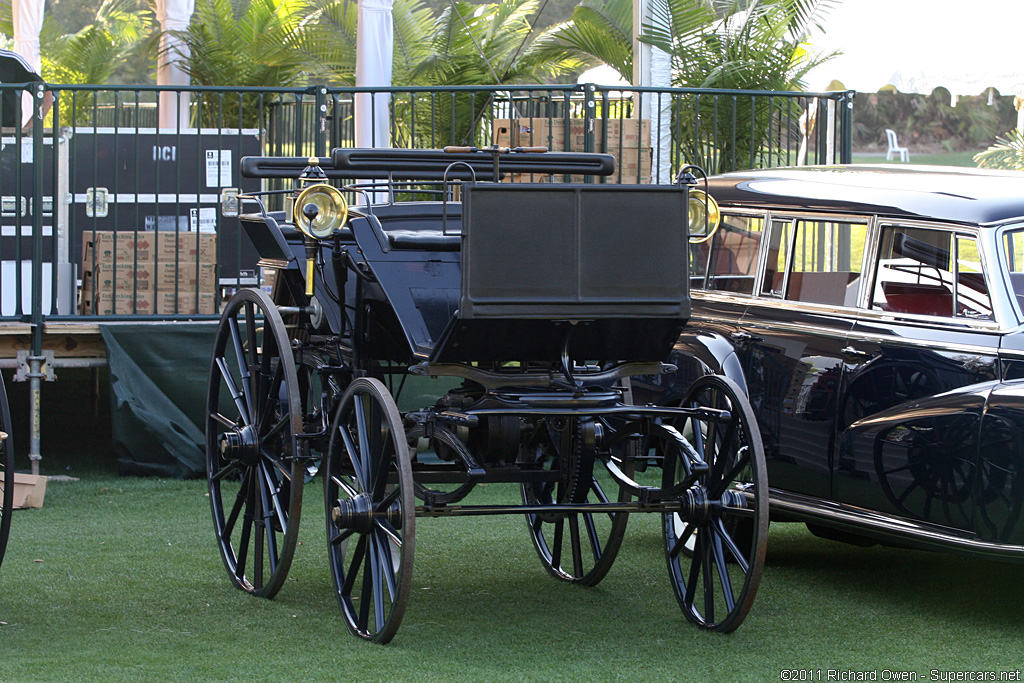1886 Daimler Motorized Carriage
Daimler’s first engine, which he built together with his long-standing congenial companion Wilhelm Maybach, was a horizontal four-stroke single-cylinder unit. It soon replaced by the so-called grandfather clock, a vertical, considerably smaller engine which was perfectly suitable for installation in vehicles. This engine saw the first use of the float carburetor developed by Maybach, a type nowadays referred to as a surface carburetor, which made reliable operation with gasoline possible.
Installing the engine in a coach was the next step in the summer of 1886. Still air-cooled but now with an output of 1.1 hp, the engine was centrally located, in front of the rear bench seat, to produce the world’s first gasoline-powered, four-wheel car. In 1887 the engine became water-cooled but still lacked an efficient radiator.
The crucially new feature of this vehicle was its power transmission. Depending on the chosen ratio the engine’s belt pulley drove discs of different sizes on a layshaft. The power was transferred to gears on the rear wheels via pinions on both sides. Instead of a differential a slip clutch was mounted on each side of the layshaft.
Story by DaimlerChrysler
In Detail
| engine | Grandfather’s Clock-Type Single Cylinder w/Hot Tube Ignition |
| displacement | 100 cc / 6.1 in³ |
| power | 0.8 kw / 1.1 bhp |
| specific output | 11.0 bhp per litre |
| redline | 600 |
| f brake size | mm / in |
| r brake size | mm / in |
| gear ratios | :1 |
| designers | Gottlieb Wilhelm Daimler, Wilhelm Maybach, Wilhelm Wimpff & Sohn (Carriage) |


